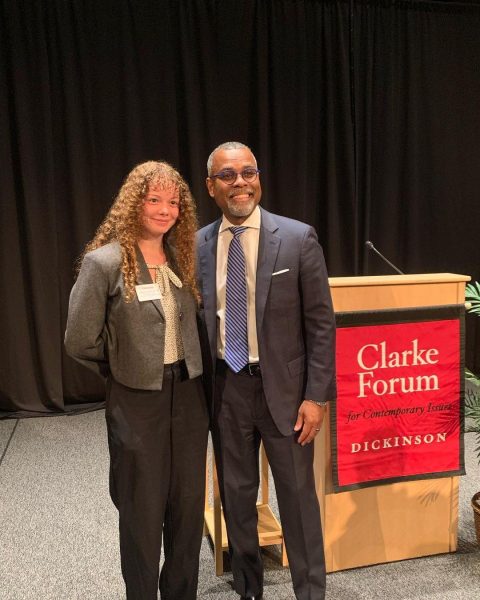Board of Trustees Conisders Plan to Offset Emissions
Ken Shultes, associate vice president for Sustainability and Facilities Planning, presented a plan to reach the college’s carbon emission offset plan to the Board of Trustees last week. The plan includes a large mounted solar array at Dickinson Park, a Tri-Gen system which would generate electricity on campus using a micro turbine and thermal energy in the form of hot water that can be used for both heating and cooling.
Together these projects are estimated to reduce emissions by roughly 4,000 metric tons of CO2 (MTCO2e). The trustee committee has yet to vote on it.
“By definition, this [project] means reducing on campus emissions by 25 percent and offsetting off-campus emissions by 2020,” explained Shultes. Climate Action Plan (CAP) projects will result in financial savings which can then be used for future CAP projects and result in a more sustainable campus.
“The beauty of Climate Action Plan projects is that they almost always result in both financial and environmental savings, since both emanate from reduced or renewable energy consumption. When the financial savings are permitted to be allocated towards additional Climate Action Plan projects, the result is a dynamic program that is essentially self-funding,” said Shultes.
Shultes reported that Dickinson’s carbon emissions are currently a little over 19,000 MTCO2e. In order to reduce emissions, Dickinson’s “Green Revolving Door Fund” allows for the implementation of such projects. In the last year, the Fund’s team executed over 20 projects, which generated over $125,000 in savings and reduced emissions by over 700 MTCO2e/year.
“It’s exciting to see huge projects like this on the table and it would cut out a large portion of our emissions to help us reach our goal,” commented Lindsey Lyons, assistant director of the Center for Sustainability Education (CSE).
While there are efforts on the college’s end as an institution, efforts to minimize carbon consumption extend to an individual student level as well. Dickinson has a Lucid Energy dashboard in 21 buildings thus far, raising awareness of real-time electricity consumption per building for students and staff.
“The hope is for people to see this and change their behaviors,” said Shultes. In addition to the dashboards, CSE and its EcoReps are preparing for the annual energy contest in March.
The 2015 contest resulted in a 10 percent reduction of total energy for that week.
“Last year, students saved 69,670 kilowatt hours, which translates to $6,270 worth of electricity costs and avoided an 84,729 pound carbon release into the atmosphere,” reported Jackie Goodwin ’17.
“We want students to interact with their consumption in their dorm rooms, academic spaces, even at home. The lessons they gain from the challenge by being educated through our peer-education programming during these three weeks will hopefully prepare them for future sustainable behavior change,” explained Goodwin.
“A few people get discouraged about sustainability, thinking that while the college can make a difference, individuals won’t make a difference,” Lyons said.
To become more conscious of their energy use, Lyons urges students to take the Green Devil Certification, an online survey that assesses individual energy habits.
The survey is available at www.dickinson.edu/greendevil and offers insight as to where minimal changes in lifestyle may yield sustainable effects.
More information on the energy dashboards and consumption by building may be found at http://buildingdashboard.net/dickinson/#/dickinson.




